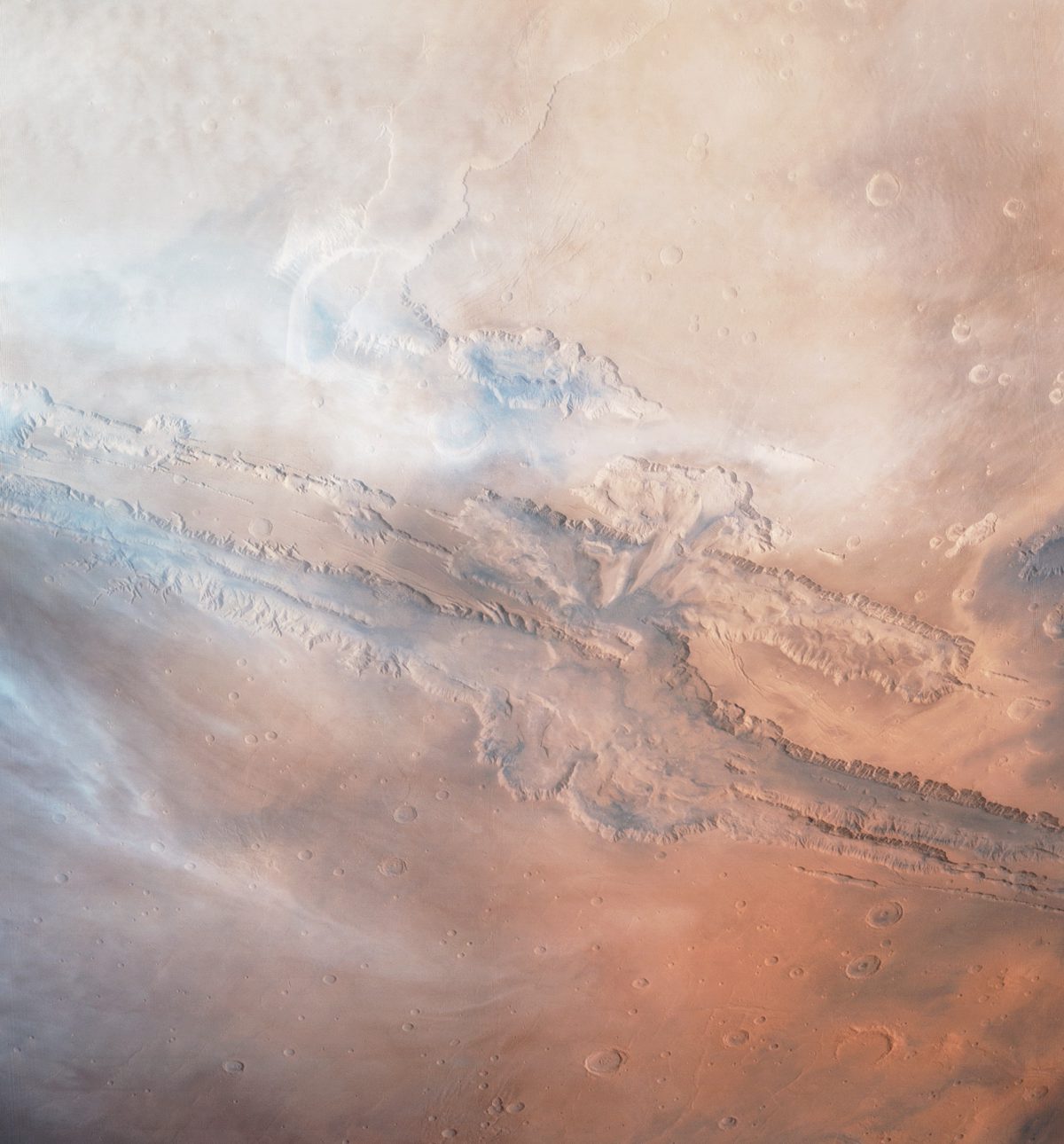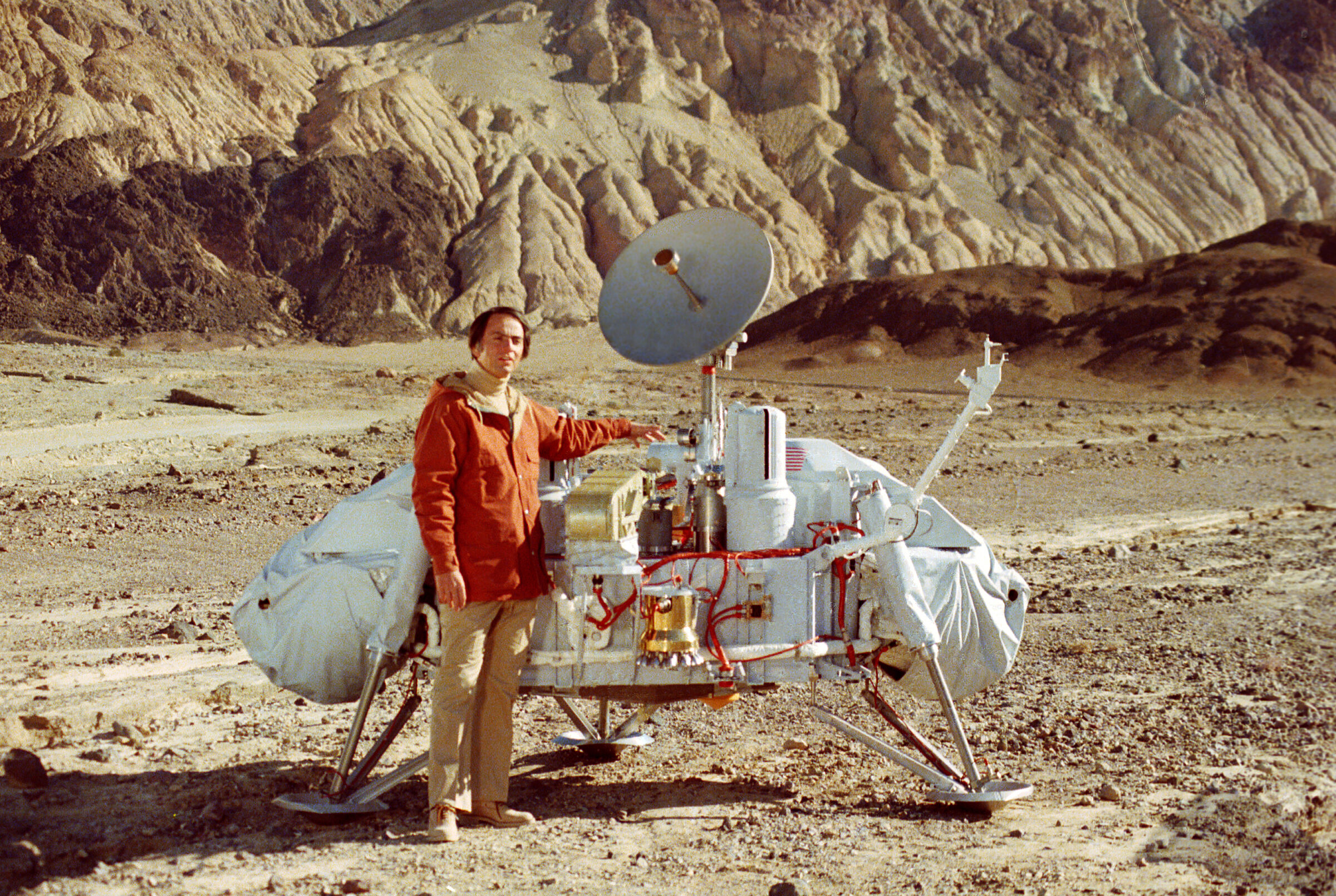Viking 1 and 2, NASA’s first Mars landers
Highlights
Viking 1 and 2 were a pair of NASA Mars landers and orbiters that launched in 1975 and arrived in 1976.
The orbiters created global maps while the landers examined the surface up close.
The landers performed ambitious chemistry experiments to search for life; the results were ambiguous.
No one knew what the surface of Mars looked like up close until July 20, 1976, when Viking 1 snapped a picture of its landing pad sitting on a vast plain of soil and rocks.
Viking 1 and 2 were a pair of NASA landers and orbiters. Each launched as an integrated spacecraft that separated in Mars orbit. The landers headed for the surface, while the orbiters stayed behind to survey the planet from above.
Prior to the landing of Viking 1, the only mission to operate from the surface was the Soviet Union’s Mars 3 spacecraft, which touched down in December 1971. Contact with the lander ended for good less than 2 minutes after touchdown.
Viking 1 and 2 provided scientists with their most complete picture of Mars to date. The orbiters had high-resolution cameras that created global surface maps of the planet, revealing that Mars was generally divided into two distinct regions: northern low-elevation plains and southern cratered highlands. The orbiters captured stunning close-up views of volcanoes, dust storms, and canyons.
The landers, meanwhile, measured temperatures at their landing sites that ranged from roughly -120 to -20 degrees Celsius (-190 to -10 degrees Fahrenheit). They found that Mars’ reddish soil was composed of iron-rich clay. They also conducted a chemical analysis of the soil to search for the presence of life; the results were ambiguous and the question of life on Mars remains unanswered to this day.

When did Viking 1 and 2 launch?
Viking 1 launched on August 20, 1975. It arrived in Mars orbit on June 19, 1976 and the lander touched down on July 20, 1976.
Viking 2 launched less than a month after Viking 1 on September 9, 1975. The spacecraft arrived in orbit on August 7, 1976 and the lander touched down on September 3.
How much did the Viking missions cost?
The Viking missions cost $1.06 billion, which when adjusted for inflation is roughly $7.1 billion in 2020 dollars. Viking remains NASA's most expensive robotic planetary science mission of all time. More than half of Viking costs ($610 million) went to lander development, while the orbiters accounted for $217 million. Mission operations through 1982 cost $104 million.
How long did the Viking 1 and 2 missions last?
Both missions lasted far beyond their planned 90-day lifetimes. The Viking 2 orbiter mission ended July 25, 1978, while the Viking 1 orbiter lasted until August 7, 1980.
The Viking 2 lander operated until April 11, 1980, and the Viking 1 lander lasted two more years, ending on November 11, 1982.

Did Viking 1 and 2 find life?
The landers contained life-detection experiments designed to search for biological activity in the Martian soil. Each lander placed a scoop of Martian soil into a chamber and added some water containing nutrients and radioactive carbon. In theory, any microorganisms in the soil should metabolize — in other words, consume — the nutrients and emit the radioactive carbon as a gas that could be detected by the lander.
That’s essentially what happened. The landers also performed a control version of the experiment, where the soil samples were heated to sterilize any microorganisms before the nutrient solution was added. In those experiments, the landers did not detect the radioactive carbon, as would be expected.
Many scientists felt the results were too good to be true considering all other data from the mission pointed to the surface being devoid of life. Perchlorate, a non-living compound that is harmful to humans in high doses, was found in the Martian soil by later missions to Mars and could have metabolized the nutrients in the Viking experiments. Further studies have questioned whether perchlorate alone can sufficiently explain the results.
Where did Viking 1 and 2 land?
Both landers targeted flat, level regions of Mars in order to increase their chances of success. Viking 1 landed on Chryse Planitia — Greek for “Golden Plain” — located in Mars’ northern equatorial region. Viking 2 landed on Utopia Planitia — Greek and Latin for “Nowhere Land Plain” — a large impact basin north of the equator. China’s Zhurong rover also landed in Utopia Planitia in 2021.

Planetary Society connection
Planetary Society co-founder Carl Sagan helped design and manage the Viking missions. He also contributed to the selection of the landing sites. A Viking 1 panorama of the Martian landscape at dusk is attributed to one of Sagan’s image requests.
The high-dollar Viking program — along with the dual Voyager probes that launched in 1977 — came at a cost, stifling the development of future planetary exploration missions. Policymakers used a perceived lack of public interest in planetary exploration as an excuse to slash budgets. Sagan, along with NASA Jet Propulsion Laboratory director Bruce Murray, decided to build a grassroots advocacy group to prove there was public support for planetary exploration. They teamed up with JPL engineer Louis Friedman and founded The Planetary Society on November 30, 1979.
Mars, the red planet
Mars once had liquid water on the surface and could have supported life. Scientists are uncovering how it transformed into the cold, dry desert-world it is today.


 Explore Worlds
Explore Worlds Find Life
Find Life Defend Earth
Defend Earth


